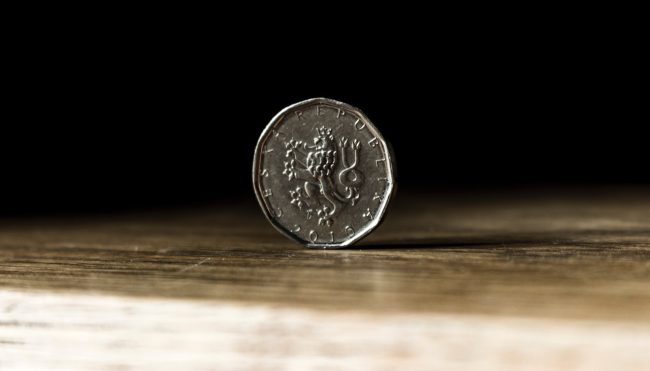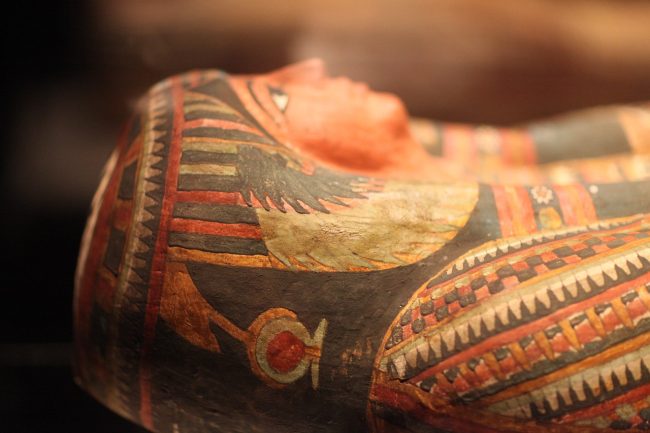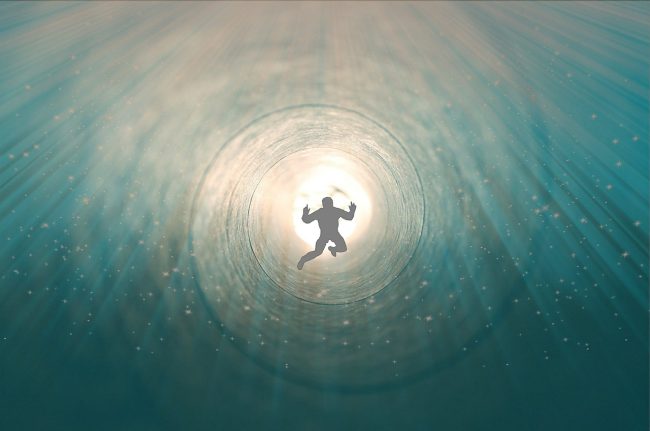What happens to your body when you die and after?
Sooner or later, we all have to face the idea that we’re mortals and our existence here is limited. Death is scary and at some point you begin to wonder about the things that happen when you die.
For thousands of years, various cultures around the globe have developed complex stories about death.The ancient Greeks believed in Thanatos, the God of death. In Norse mythology, you have Hel or Hela, the goddess of death. In East Asian and Buddhist culture, you have Yama, the king of hell. In the classic Western culture, death is personified as the Grim Reaper.
10 Things that Happen To Your Body When You Die
Every culture and civilisation have their own distinct versions of Hell and Heaven. In any way you look at it, death has captivated the minds of generations, simply because no one has come back to tell us what it is like to die.
But what does science tell us? What happens to our bodies when we die? Let’s look at 10 facts that happen when we die.
1. Primary flaccidity
In the first moments after death, all the muscles in the body relax. Pupils start to dilate; the eyelids droop, the jaw might open, and all the joints and limbs become flexible.
In medical terms, this phenomenon is known as primary flaccidity or the relaxation of the skeletal muscles. As a result, the skin will start to sag, and certain parts of our body will become pronounced, such as the jaw or joints.
As the muscles continue to relax, the sphincters will also lose tension. The sphincters are the muscles responsible for constricting our natural body passages and orifices. When sphincters let go, urine, feces and other body discharges will be released, giving out a certain unpleasant odour.
It’s nothing to be ashamed of or disgusted by. It’s just part of our biology.
2. Pallor mortis
Since the heart has stopped beating, the small veins empty out, causing the body to grow pale. This condition is known as pallor mortis.
The words originate from Latin. “Pallor” means “paleness”, and “mortis” stands for “death”.
However, the “death paleness” occurs mostly in people with a lighter skin tone.
3. Algor mortis
This also comes from Latin. “Algor” means “chill” and “mortis” stands for death. It’s the next stage of death where our body loses temperature.
So, the “death chill” is when the dead body reaches the environment temperature. Studies show that the body temperature decreases at a fairly steady rate. In approximately 18-20 hours, the body will reach an equilibrium with the environment temperature.
Forensic scientists use algor mortis to approximate the time of death, calculating the body’s temperature and that of the environment.
4. Livor mortis
Ever wondered how forensic teams know if a body has been moved and when? Well, it’s all in the science of what happens to our bodies when we die.
When the heart stops pumping blood, gravity takes over. So, the blood will drop to the areas of the body that are closest to the ground.
If the body is not moved for several hours, the portions of the body closest to the ground will get red due to the accumulation of blood in those areas.
This process is known as “livor mortis” or “postmortem stain”.
5. Rigor mortis
Within 3 hours, chemical changes occur in the muscles’ myofibrils (the cells that make up the muscles). As a result, the muscles start to stiffen.
Rigor mortis is probably the first recognisable sign of death. This “stiffness of death” first affects the eyelids, neck and jaw. It will then spread to the face, chest, abdomen, arms and legs. In the end, it will reach the toes and fingers.
Why do people put coins on the eyelids of the deceased?

The practice of closing one’s eyes immediately after death and placing coins on the eyelids is an attempt to keep the eyelids closed before rigor mortis intervenes. If rigor mortis sets in, you won’t be able to close the deceased person’s eyes because the muscles would have stiffened already.
It is disturbing to gaze upon a dead body whose eyes are wide open. Popular belief says that a dead man with open eyes fears hell because of past behaviours.
12 hours after the rigor mortis has set in, the muscles of the dead body are entirely stiff. After 12 hours or so, depending on the person’s age, condition, gender or air temperature, it is challenging to move or manoeuvre the deceased’s limbs.
The knees and elbows would be somewhat bent, while the fingers and toes might appear a bit twisted.
6. Secondary Flaccidity
After rigor mortis has reached its peak, the muscles begin to loosen up again. Chemical changes continue to develop within the cells, leading to tissue decay.
Of course, this secondary flaccidity phase is affected by external conditions. Cold temperatures will slow down tissue decay.
It is during this phase that the hair and nails of the deceased appear to be growing. However, this is just an illusion caused by the skin beginning to shrink.
Once the secondary flaccidity phase is complete, all the muscles in the body will again be relaxed.
7. Putrification
In this phase, bacteria and fungi split the proteins from your cells, giving out a foul smell. Soft tissue breaks down, and the organs get liquefied. Yes, it is nasty. But we’re mortals, and that’s the cycle of life.
Of course, there are methods of embalming that will slow down the putrefaction process.
Egyptians would embalm their kings by removing all the organs and the moisture from the body.
They would fill the entire torso cavity with an oil mixture and leave it like that for days. After a few days, they would drain the oil out together with all the liquefied remains of the internal organs. They were so good at this that today we can examine the mummified body of an Egyptian king and still get a sense of how he was like 3,000 years ago.
8. Decomposition
But of course, we’re not Egyptian pharaohs, and our bodies follow the normal, natural course.
The first to decompose are the organs and soft tissues. Without blood driving oxygen through them, they turn into moisture because all the cells that make our soft tissues and organs are 70% water.
Remember that our gut contains trillions of microbes that help us digest our food? When we’re dead, nothing can hold off this bacteria. So, they escape, decomposing everything on their way, producing foul-smelling gases, like ammonia or hydrogen sulphide.
After three or four months, blood vessels deteriorate, and the iron inside them spills out. The molecular structures of your cells break away, and tissue becomes mush.
9. Natural mummification can occur
That’s right. A year after your death, the acidic body fluids and toxins break down everything.
A decade goes by, and the somewhat wet, low-oxygen environment of the graveyard can trigger a chemical reaction that will turn the body fat into soap or grave wax. However, a drier grave might lead to natural mummification. If the moisture is somehow evaporating from your skin, ears, nose, eyelids, the body will simply dry out and thus mummify.

There are countless examples of naturally mummified bodies that have been excavated in the late 19th century, such as Ginger, the first mummy to be exhibited in public at the British Museum, in 1901.
10. Is there life after death?
Well, this is not exactly a fact. However, we couldn’t have ended this list of 10 things that happen when you die without pondering the complex puzzle of life after death.

There are numerous ideas and stories here. Some philosophers and religions believe the soul is separate from the body. So, when our mortal bodies die, something continues to linger on.
What do different cultures think about life after death?
German philosopher Friedrich Nietzsche formulated the idea of eternal recurrence. The idea had existed for hundreds of years in various forms.
It basically states that energy and matter transform over time, so our very existence repeats itself in an infinite number of cycles. Stoics in Ancient Greece believed that the universe itself was going through repetitive stages of transformation, while the Buddhists came up with the “wheel of Samsara” or “the wheel of time” concept.
According to Buddhist belief, each soul will begin a new cycle after death. So, we will get to live another life and another, and another… Yes, we’re talking about reincarnation. Some people believe that a deja vu is proof of that.
Or maybe there’s nothing after death. We will simply stop existing, and our bodies will seed the Earth, becoming part of the natural cycle of things. Who knows?
Make the most of it
What we do know is that we have a limited time here. So, we should make the most of it. Stop sitting on your sofa, scrolling on your Instagram feed and sulking that you are not on a Caribbean island with Pina Coladas in hand like the influencers you’re following. Get off your bed and start living; make the most of the time given to you.
Yes, death is pretty grim. But let’s treat it with respect because it’s part of life. And until that time comes, we’ve got a whole big world to explore and enjoy!
